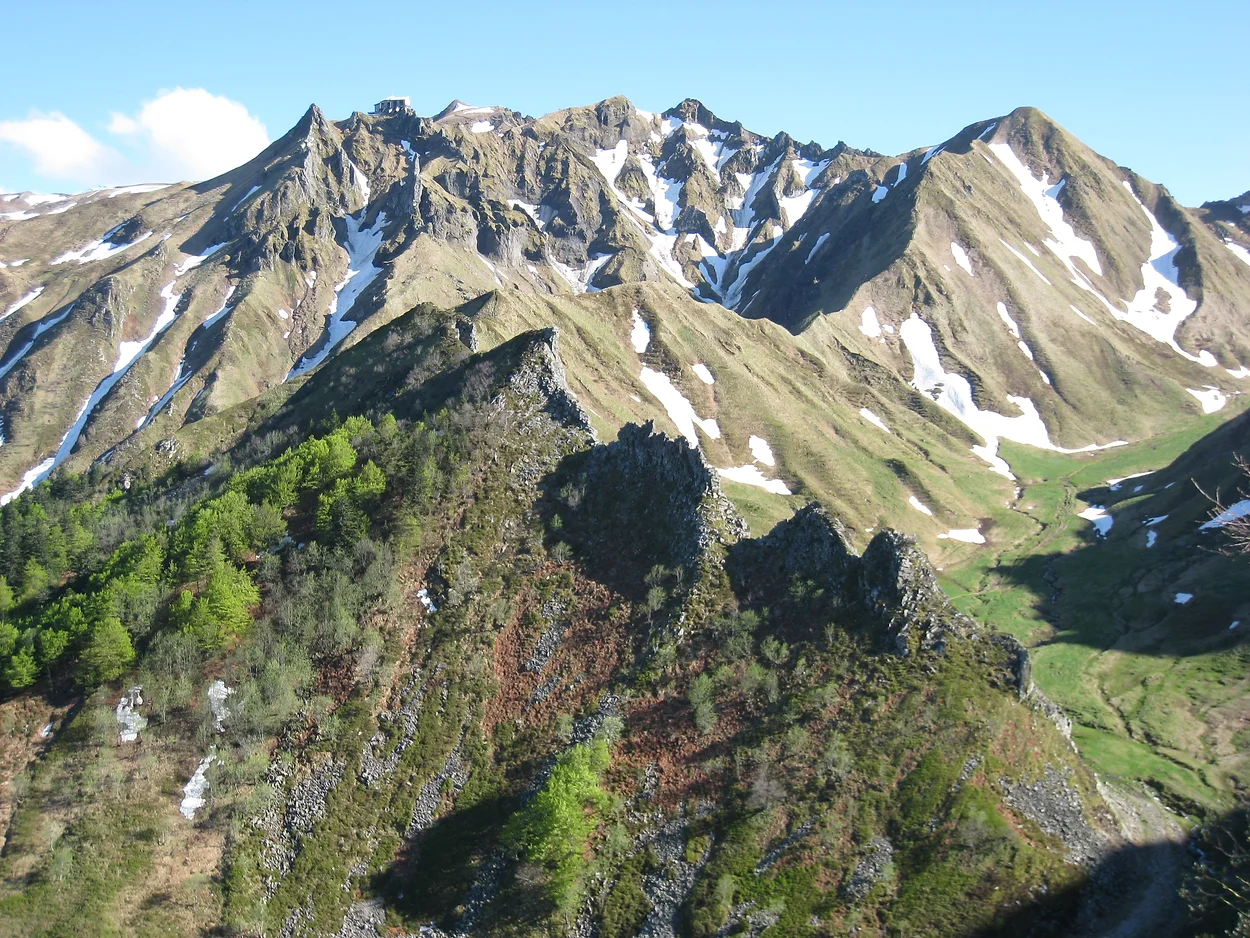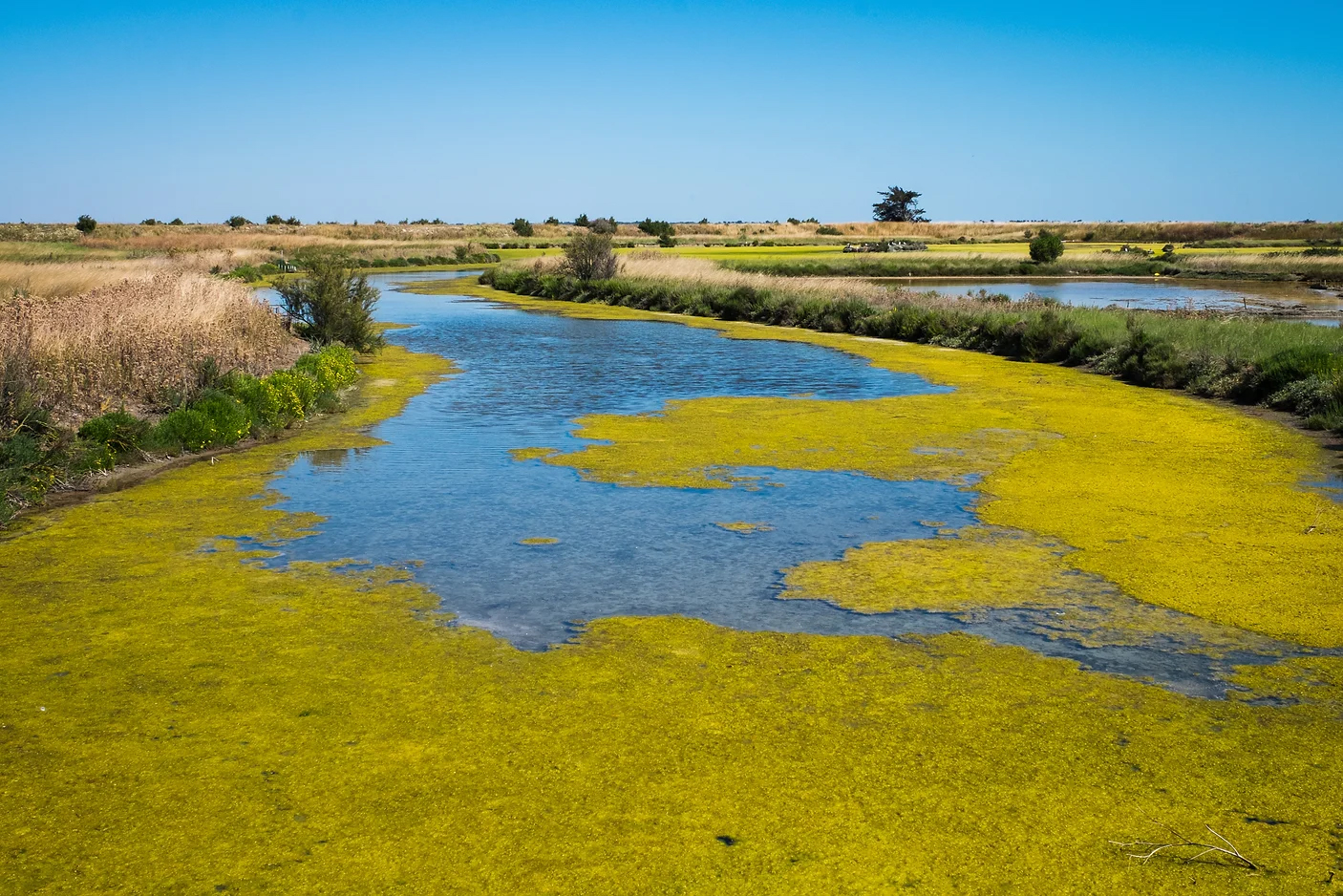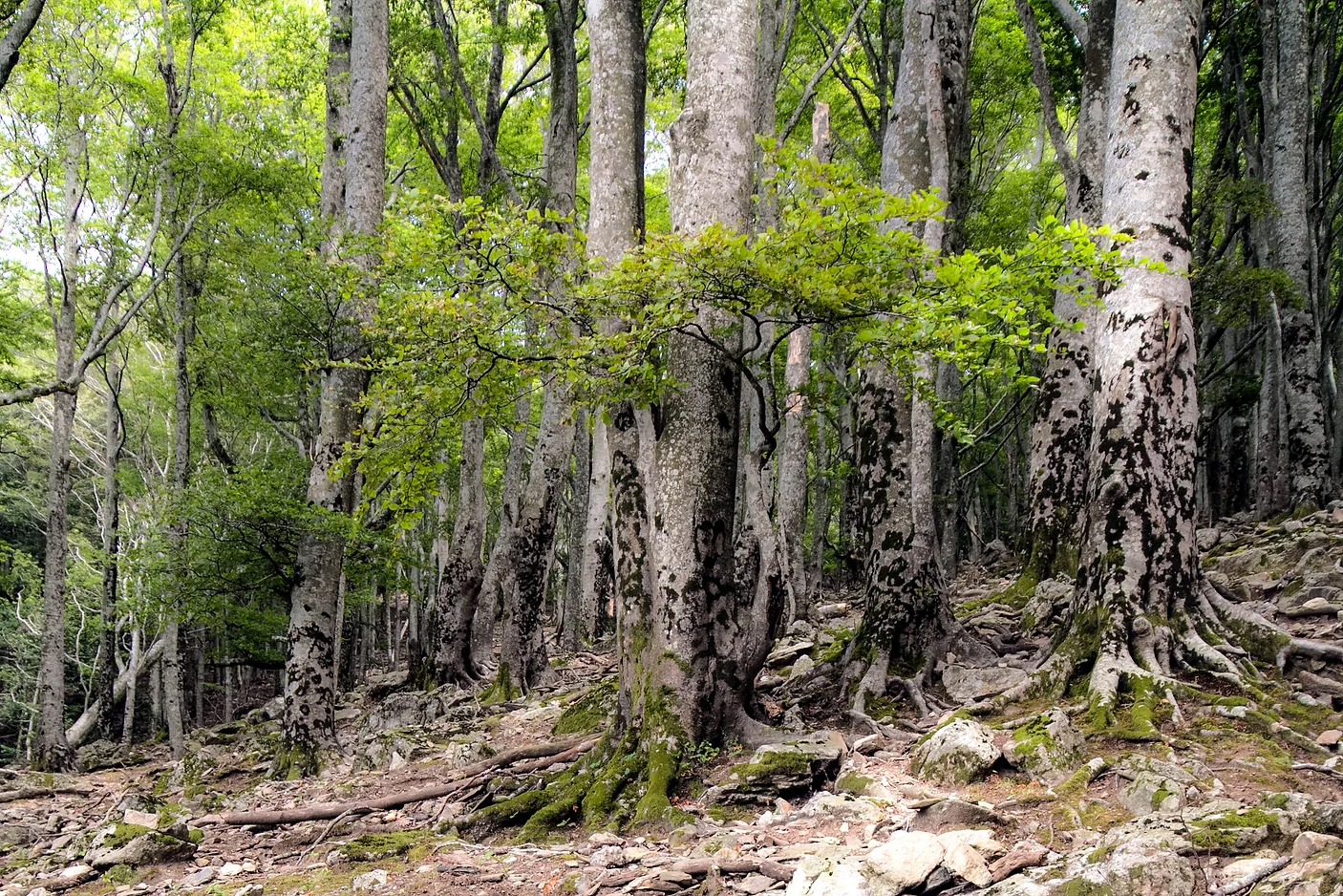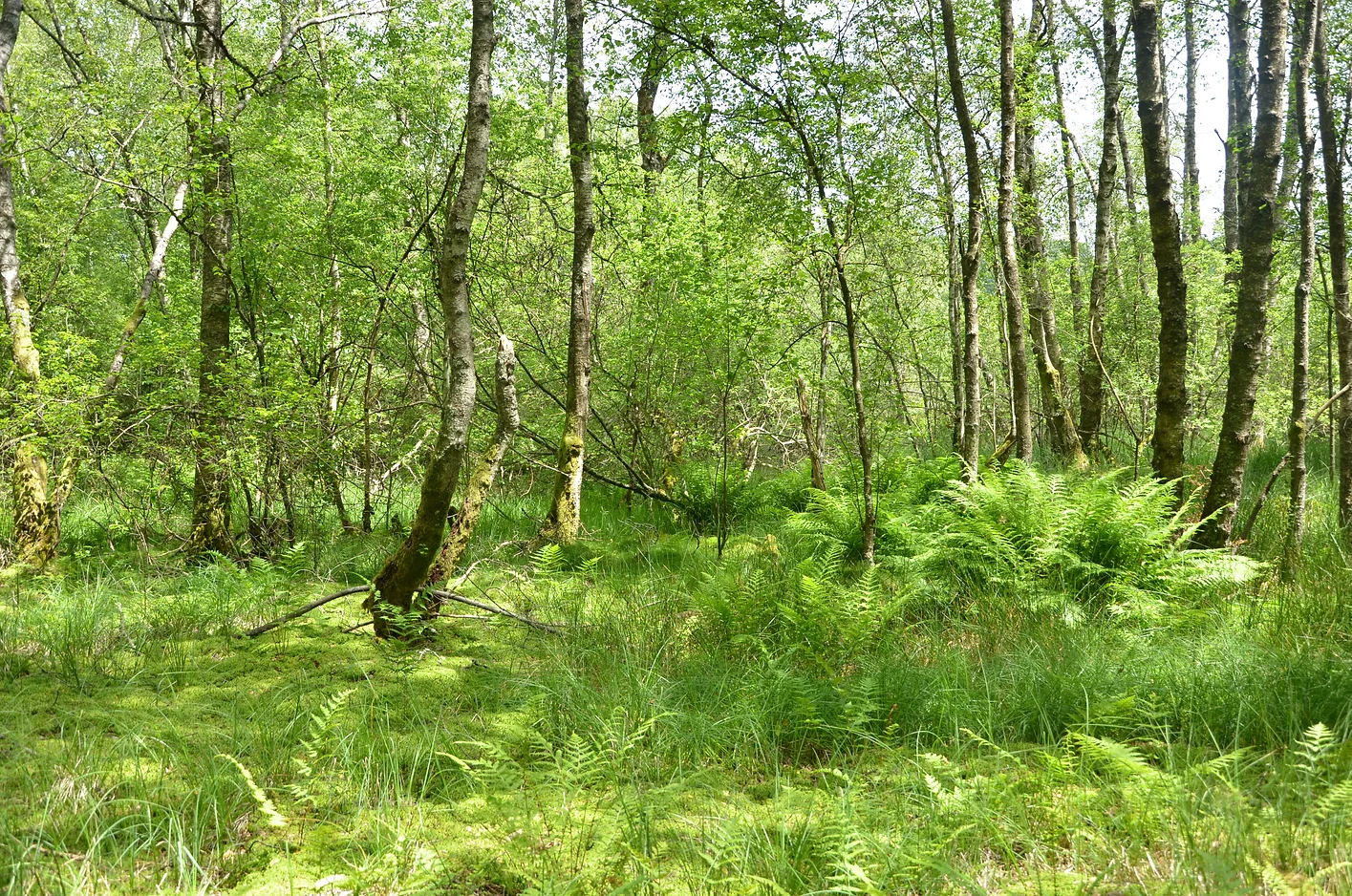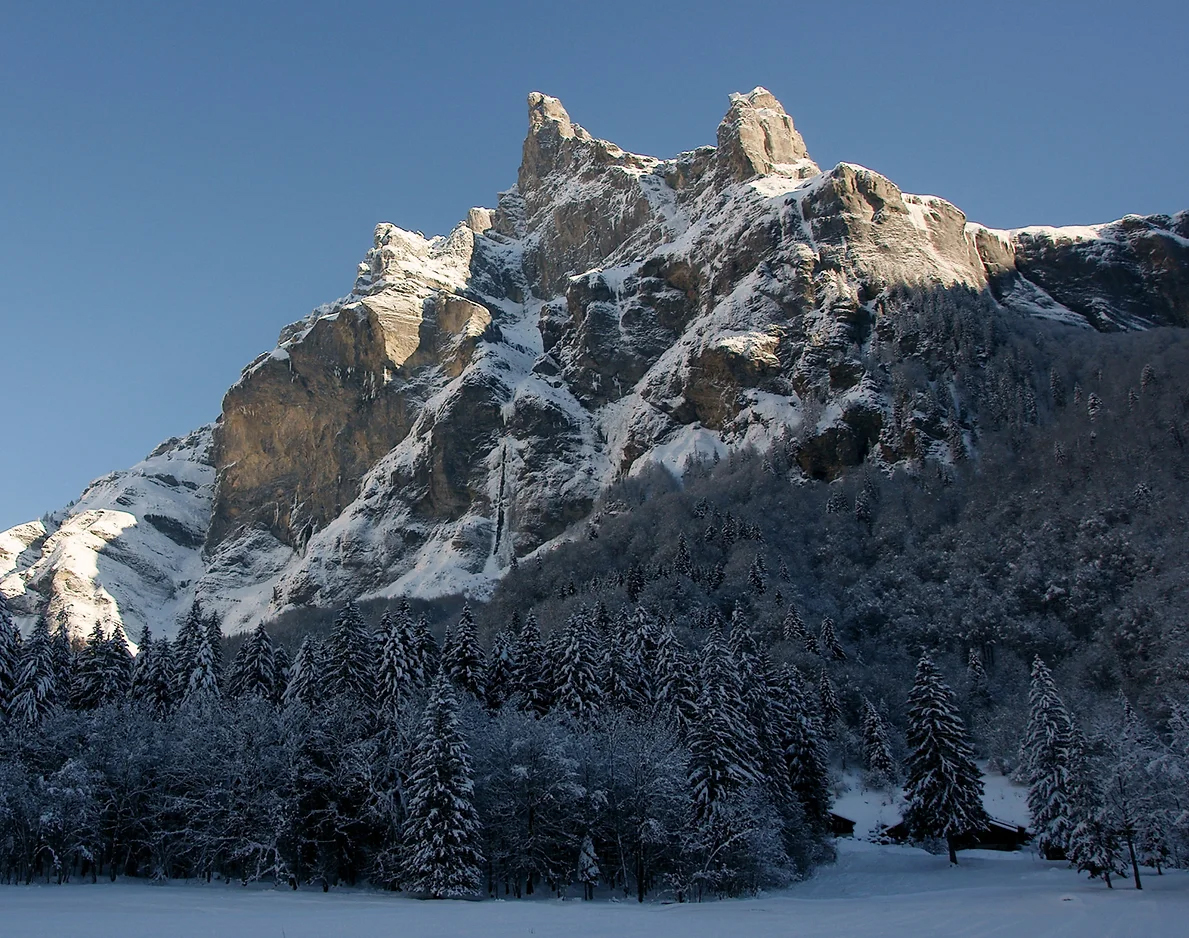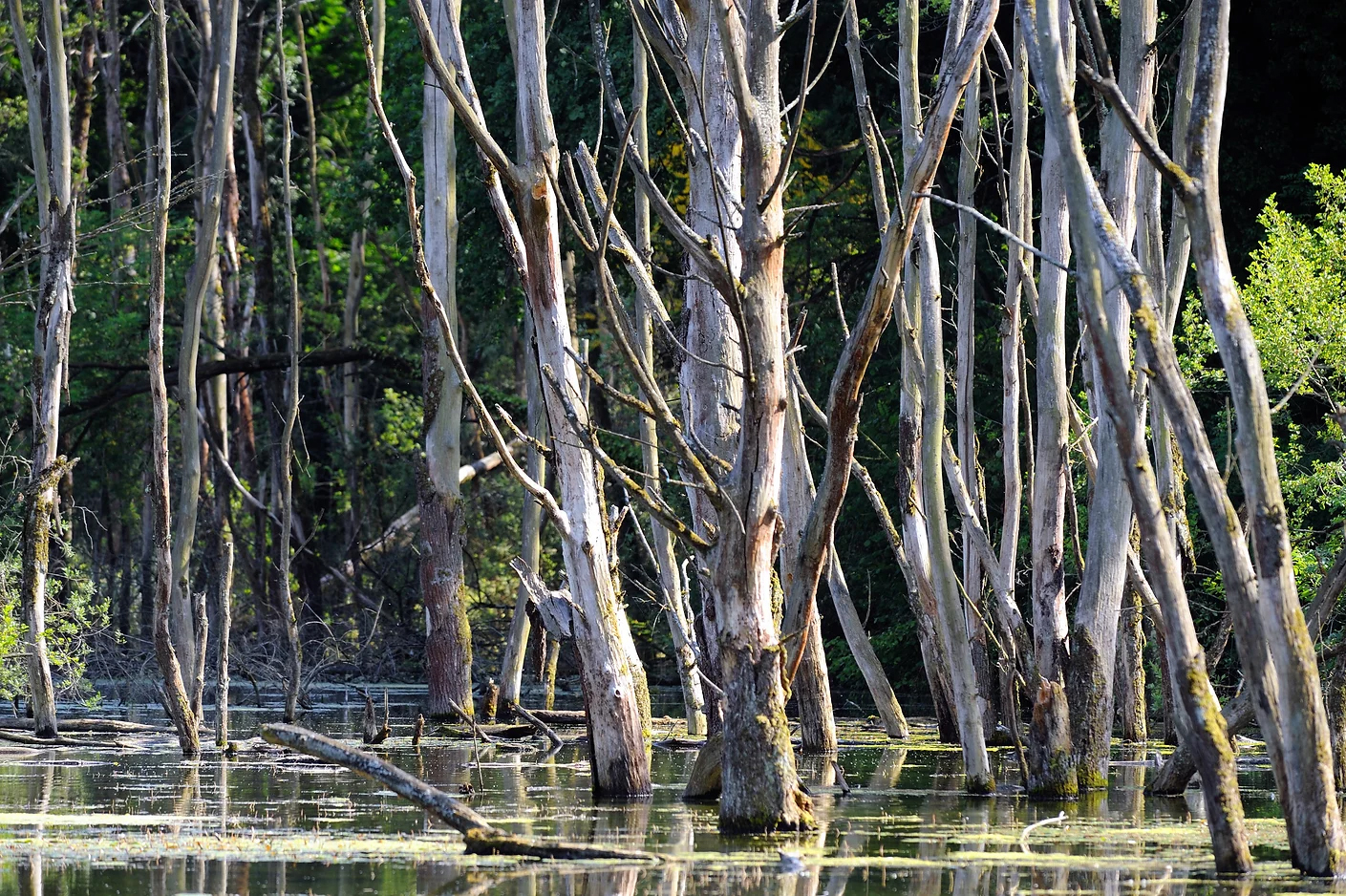Climate Change Adaptation – Toolkit for Protected Area Managers
What is this toolkit for?
This toolkit has been produced to support the work of Protected Area managers in doing the necessary commitments and adjustments to minimize the impacts that Climate Change is having, and will continue having, in the natural spaces they safeguard.
Who should read this?
This toolkit is appropriate for Protected Area and Natura 2000 sites managers, as well as for private/land owners and other nature conservation proffessionals that want to get a deeper knowledge on the policy and strategies currently in place that can help Protected Areas to integrate Climate Change adaptation plans.
It can be used both as a first step, for those managers that did not consider yet Climate Change adaptation measures in their Parks, and for those that despite having started with adaptation measures they need to take further steps in order to have a more integrated approach.
How can this toolkit help you?
In this toolkit we have collated, through the experience and collaborative work of several institution and Protected Area representatives from Europe, both evidences on how climate change is affecting Protected Areas, strategies that managers are putting into place and some of the challenges and solutions found during the process. With this, we hope to contribute to reach a common understanding of the problem and provide some guidance to help planning your actions to adapt the management of Protected Areas to Climate Change.
Authors
The toolkit has been developed in the framework of LIFE NaturAdapt project which counted with the support of xxxx, and the EUROPARC Federation’s taskforce in Climate Change.

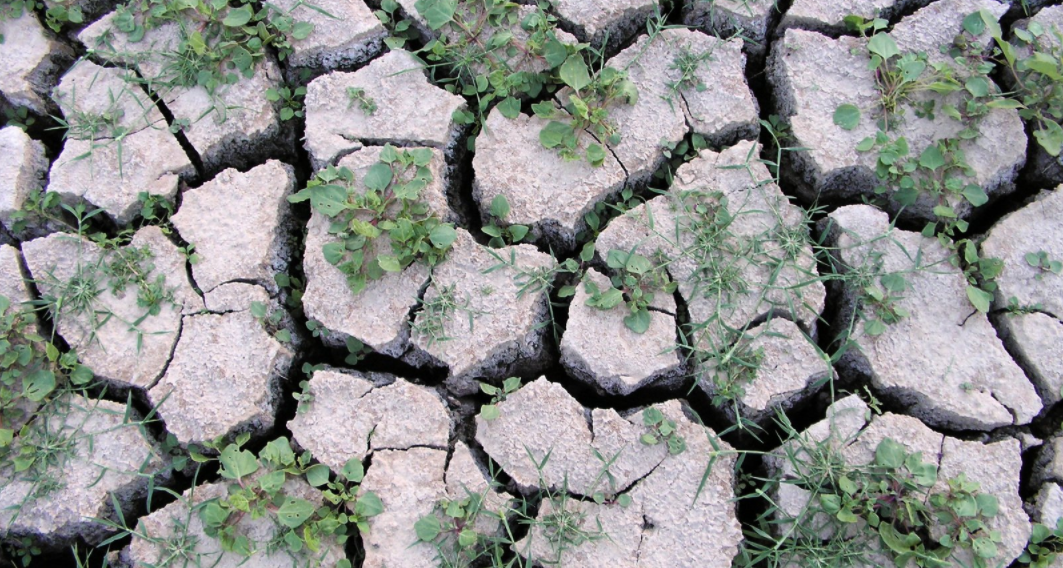
Introduction
Climate Change & Protected Areas
Well-managed Protected Areas safeguard biodiversity and natural processes contained within their boundaries that are also essential to support the adaptive capacity of ecosystems and communities outside them. Additionally, despite all too often the links between biodiversity and climate change are not enough explored, research and experience show that Protected Areas play a central role in the transition towards a nature-inclusive and climate-resilient society.
When evidences of a changing climate are present all over the planet, special attention should therefore be given to put into place the necessary strategies that will allow Protected Areas and the natural systems contained in them to be sustained in time. This means that, not only some of the rare and extremely valuable natural resources they protect could stand a chance against adverse climate conditions to come, but also that the ecosystem services delivered by Protected Areas and therefore their benefits for the whole society would still be present in the future.
Policy
Nowadays, Climate Change is on the political agenda at all levels. Whilst EU policies focus on greenhous gases emissions and the first priority of the current European Green Deal is to achieve carbon neutrality by 2050, the legislative framework on climate change is, step by step, being developed towards finding solutions to a global problem that knows no boundaries.
At International level
The Paris Agreement is the reference document on climate change. It is based on the principle of Common but Differentiated Responsibilities and Respective Capabilities in order to assure a just transition. The UN agency in charge of compliance with the treaty and hosting the COPs is the UNFCCC.
Additionally, other international agreements and parties such as the European Green Deal, the United Nations Convention on Biological Diversity (CBD) and the United Nations Convention to Combat Desertification (UNCCD) all identify that climate change, biodiversity loss and habitat degradation are currently affecting the very conditions upon which human communities and wildlife depend.
Additionally, the Sustainable Development Goals 2030 also set out the international development agenda, highlighting the interconnection of the challenges by proposing 17 objectives. The fight against climate change is considered through the objective 13. Other objectives are related to biodiversity (objective 14 and 15).
At EU level
On 2020, the European Commission proposed the EU Climate Law to complement the existing framework to tackle Climate Change by irreversibly enshrining the 2050 carbon neutrality target in the law. This legislative act is in line with the Green Deal and the Union’s desire to position itself as a global climate leader. Among others, the EU Climate Law sets the long-term direction promoting constant progress on climate action, fosters the enhance action on adaptation to climate change adn the creation of a governance process to keep the EU on track towards reaching the climate neutrality objective.
Within the framework of the Green Deal, the European Commission launched the EU Climate Pact “to give everyone a voice and space to design new climate actions, share information, launch grassroots activities and showcase solutions that others can follow. More information on the EU Climate Pact can be found in the EU webpage.
To end with, in regards of the Natura 2000 network, the European Union seized the issue on the links between climate change and biodiversity through a Guidelines on Climate Change and Natura 2000. The European Commission explored how to deal with the impact of climate change and on the management of Natura 2000 network of areas of high biodiversity value. Here is the “supplement” of the document. You can get more information on the Natura 2000 network in this page.
White Paper on Protected Areas and Climate Change
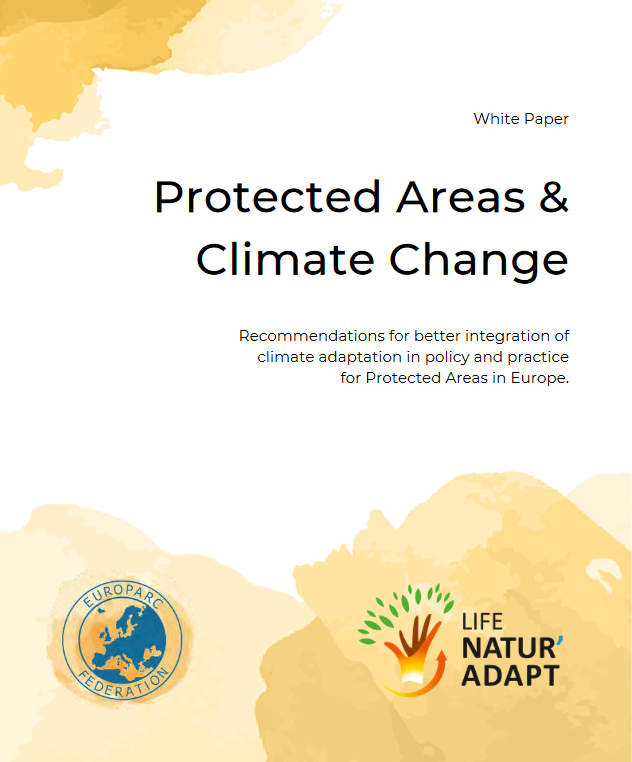 This White Paper details recommendations for better integration of climate adaptation in policy and practice for Protected Areas in Europe. It was developed within the Natur’Adapt project with the support of the EUROPARC Task Force on Climate Change, and calls upon European decision-makers and national authorities to facilitate the co-design of integrated, long-term and large-scale environment management and spatial planning.
This White Paper details recommendations for better integration of climate adaptation in policy and practice for Protected Areas in Europe. It was developed within the Natur’Adapt project with the support of the EUROPARC Task Force on Climate Change, and calls upon European decision-makers and national authorities to facilitate the co-design of integrated, long-term and large-scale environment management and spatial planning.
Within this process, Protected Areas should play an essential role. The White Paper provides four recommendations on how to make the most of our protected spaces in Climate Adaptation planning.
Click on the button to download the White Paper on Protected Areas and Climate Change – English and French versions available:
Adaptation Planning
In this section, you will find the guidance to understand the necessary steps to implement actions to adapt Protected Areas to Climate Change. From technical manuals to online conferences and interviews, we invite you to browse among these resources and learn from others´ experiences
Natur’Adapt - Climate Change Adaptation Process Methodological Guide
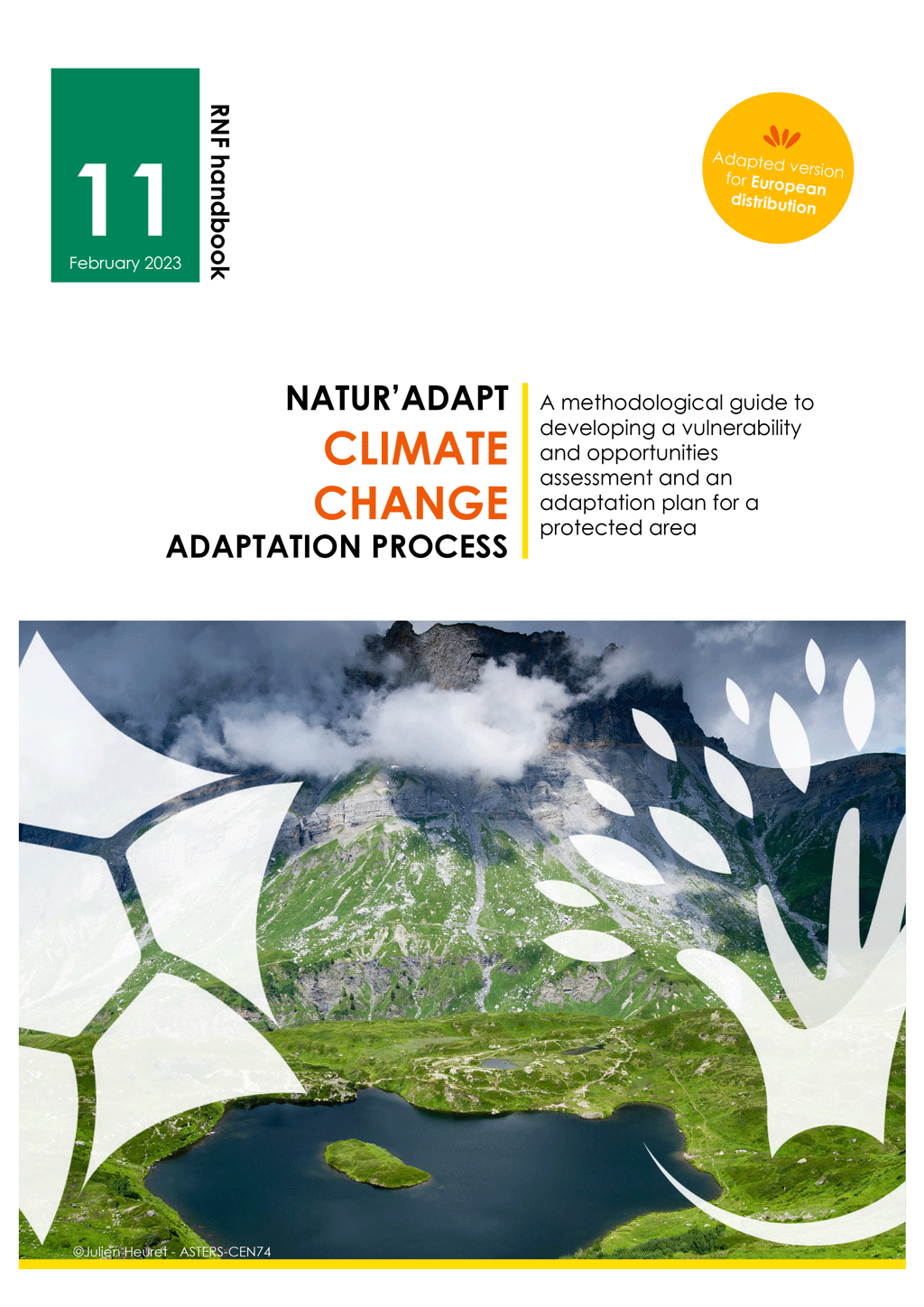 A methodological guide to develop a vulnerability and opportunities assessment and an adaptation plan for Protected Areas.
A methodological guide to develop a vulnerability and opportunities assessment and an adaptation plan for Protected Areas.
This guide has been originally produced in the context of Climate Change adaptation for French Protected Areas in the framework of LIFE NaturAdapt project. However, since the proposed process can be applied to many contexts in Europe, it is here presented in English language.
The guide has been produced together with different factsheets, which are practical tools to implement the different stages of the adaptation process in the field.
Download the methodological guide below:
GuideAnd the different factsheets below:
Factsheet 1 Factsheet 2 Factsheet 5 Factsheet 6 Factsheet 7 Factsheet 8
Note: some of the examples and links are either in French language or refer to French context. Furthermore, two of the factsheets (nr. 3 and 4) are not included in this document for being too specific to the context of France.
Technical Manual - Protected Areas in the Face of Global Change: Climate Change Adaptation in Planning and Management.
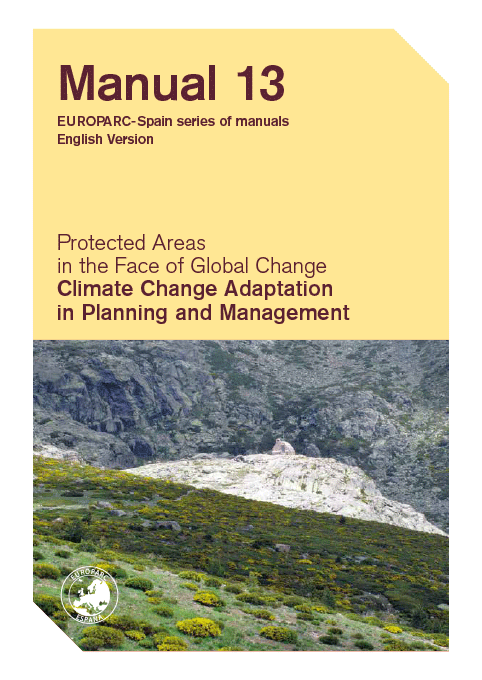 This technical manual was published by EUROPARC-Spain within the framework of the project “Integration of adaptation to climate change in the planning and management of protected areas in Spain” and was commissioned by the Spanish Office for Climate Change. The LIFE RedBosques project shares the recommendations provided in this manual and its application in management planning instruments will be promoted.
This technical manual was published by EUROPARC-Spain within the framework of the project “Integration of adaptation to climate change in the planning and management of protected areas in Spain” and was commissioned by the Spanish Office for Climate Change. The LIFE RedBosques project shares the recommendations provided in this manual and its application in management planning instruments will be promoted.
You can download the manual clicking in the button below:
DownloadSiggen Seminar 2020 - Helping protected areas adapt to a changing climate
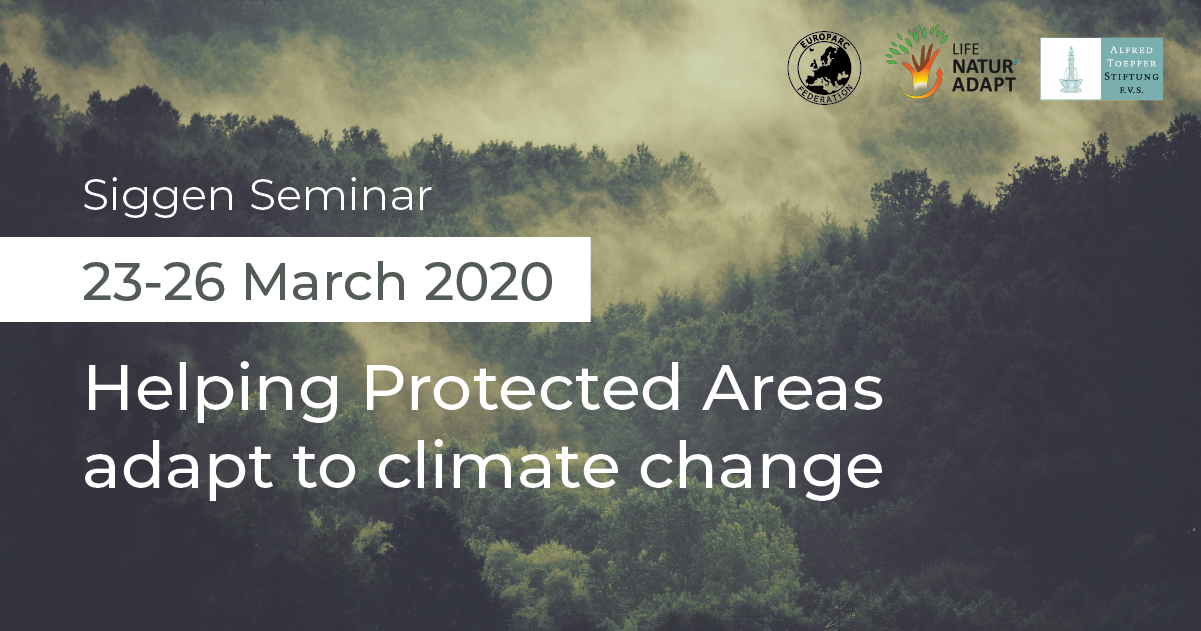
Organised by EUROPARC Federation in an anual basis with the support of the Alfred Toepffer Foundation, the Siggen seminars are an opportunity to learn, exchange and innovate.
In this edition of 2021, the seminar took place online under the theme Helping Protected Areas Adapt to Climate Change in order to proivde an overview of the basic concepts and ideas underlying climate change adaptation for protected area managers, network and exchange with experienced nature conservation professionals and contribute to the design of a draft recommendation for policymakers.
You can get more information and download the seminar presentations here.
Climate Adaptation and Biodiversity Conservation - Priorities and measures to improve planning and management in Protected Areas
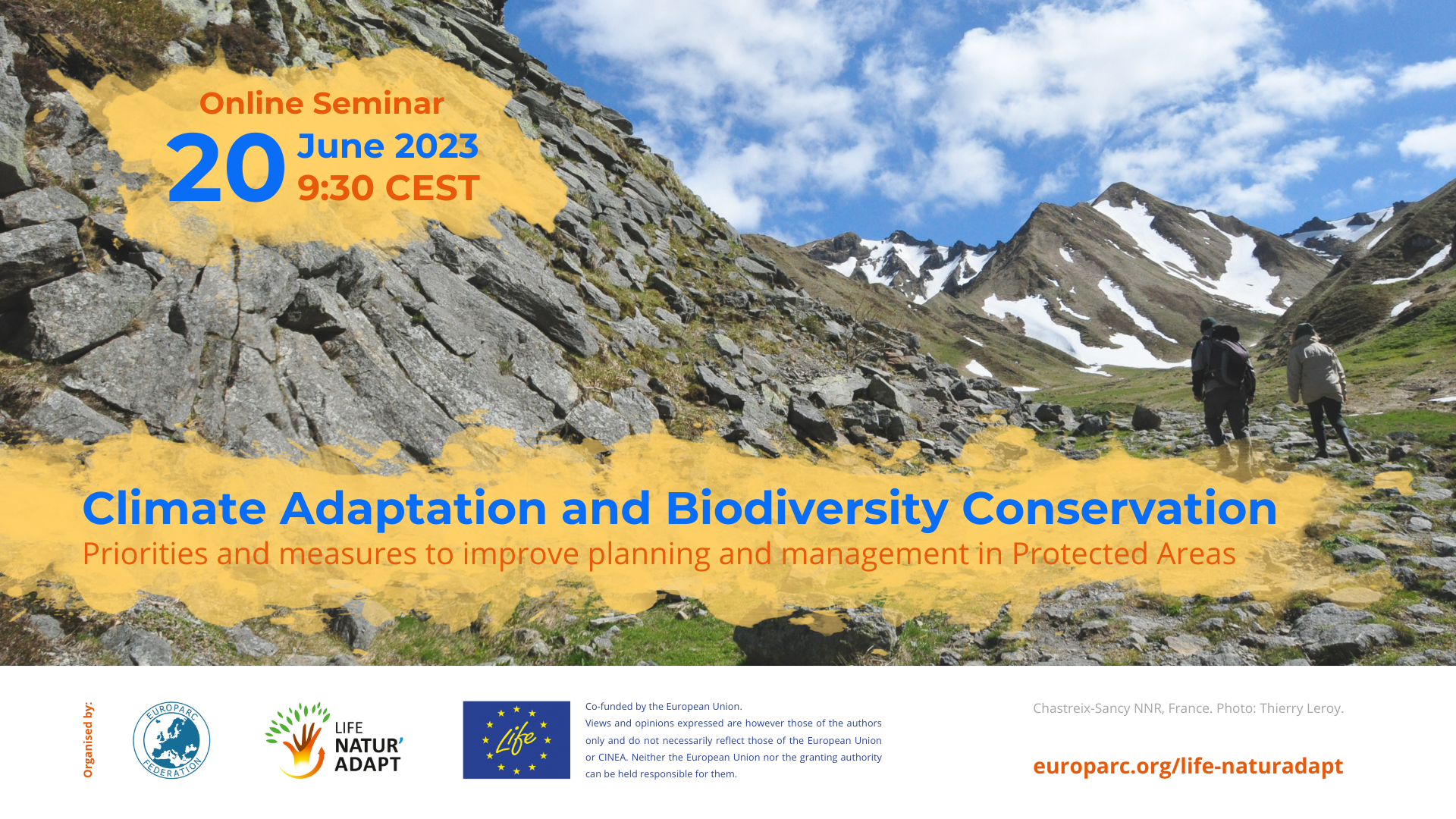
The conference Climate Adaptation and Biodiversity Conservation – Priorities and measures to improve planning and management in Protected Areas was hosted online in June 2023 as the closing event of the project LIFE Natur’Adapt.
The objective of the session was to explore how to develop integrated approaches among different governing levels to improve climate change adaptation, strategies and methodologies to improve planning and management and the integration of adaptation priorities with biodiversity conservation objectives and measures in Protected Areas.
In it, different experts presented the main outcomes of the project, case studies from Protected Areas and current policy priorities and developments at regional and European levels to an audience composed by decision-makers, organisations working on environment, biodiversity and climate change, Protected Areas networks and managing authorities.
Get more information and presentations delivered during the online conference here, or directly watch the recording of the sesssion.
Videos
EUROPARC´s Climate Change Week - webinar I.
In this first webinar, we started by presenting elements of the Natur’Adapt Methodology for Climate Change adaptation in Protected Areas. It was followed by a presentation of the results of a meta-analysis of the effectiveness of corridors in conserving terrestrial species in a changing climate.
EUROPARC´s Climate Change Week - Webinar II.
When developing a climate change adaptation plan, understanding the future of climate is essential. In this second webinar, we discovered the Copernicus Climate Change Service (C3S) from the European Commission and how it can be used for biodiversity conservation.
EUROPARC´s Climate Change Week - Webinar III.
In this 3rd installment, participants discovered the results of i) an evidence map on species translocations and ii) a meta-analysis on the effect of forest management abandonment, as measures for biodiversity conservation and climate change adaptation.
Climate change adaptation in Protected Areas – From theory to practice
During the webinar, we looked at outcomes from the Natur’Adapt project on climate change in Protected Areas. As a matter of introduction, Ainhize Butrón Mota, IHOBE, gave a thought-provoking presentation about the psychological barriers (dragons) that lead to inaction in the face of climate change. Then, through case studies from Spain and England by José Atauri Mezquida, EUROPARC-Spain and Simon Duffield, Natural England respectively, participants went through important learnings on the process and practice of planning for climate change adaptation in protected areas.
Urban forestry as a Nature Based Solution to mitigate climate change and reduce pollution
Nature Based Solutions are solutions to environmental, social and economic challenges inspired, and/or supported by nature. This webinar explored specifically the innovative NBS of ‘urban forestry’. Urban forestry focuses on the care and management of trees in the urban environment. As such, it answers to the European goal of improving the restoration of degraded ecosystems, which then strengthens their resilience. Additionally, it supports the delivery of vital ecosystem services and contributes to cities green growth, which fosters citizen well-being.
Restoring our marine environment to tackle Climate Change
Our oceans and seas play an indispensable role in climate change mitigation and adaptation. However, deterioration of the marine and coastal environment is reducing its capacity to do so. A promising way to improve this capacity is by implementing measures that restore the natural capacity of the environment to mitigate and adapt to climate change. Restoring our marine environment and improving its biodiversity is imperative if we want to maintain all the ecosystem services it has to offer. In this webinar, we looked at nature restoration projects in two Mediterranean Marine Protected Areas and learned how different environmental factors are inventoried and how natural conditions are restored across the Mediterranean. The webinar addressed the challenges and solutions of using nature restoration for Climate Change mitigation and adaptation.
In Practice
In this section you will find practical information and interviews on how Protected Areas and institutions across Europe have implemented different strategies to adapt to Climate Change. From case studies located in France to interviews from Belgium, Italy, The Netherlands, Scotland and Spain, this practical examples can help you to understand how adaptation to Climate Change can be done on the ground.
Case Studies
Videos
Dynamic nature care, a solution to adapt to Climate Change? – A conversation with Myrthe Fonck
This is the first episode of the series Climate Talks, a five-part documentary that aims at better understanding what it takes to adapt to climate change. In it, we will discover how, in the face of climate change, dynamic dune management brings co-benefits for drinking water production, coastal defence and biodiversity while restoring the adaptive capacity of ecosystems and communities. This episode is in Dutch language with English subtitles.
Cooperation, a cornerstone for climate change adaptation? – A conversation with Lorenzo Merotto.
This is the second episode of the series Climate Talks, a five-part documentary that aims at better understanding what it takes to adapt to climate change. In it, we’ll discover how planning for climate change adaptation in the Protected Area also improved the relationship with local stakeholders. Working with fishermen and divers is now a key to successfully conserve marine habitats and adapt to climate change. This episode is in Italian language with English subtitles.
Biodiversity, the foundation for climate change adaptation? – A conversation with Etienne Aulotte
This is the third episode of the series Climate Talks, a five-part documentary that aims at better understanding what it takes to adapt to climate change. In this episode, we’ll discover how adapting forest management to imitate the natural evolution can support biodiversity and help develop the robustness of ecosystems to extreme climate events in a periurban context. This episode is in French language with English subtitles.
Integrated regional governance, a key to climate change resilience? – A conversation with Ainhize Butron
This is the fourth episode of the series Climate Talks, a five-part documentary that aims at better understanding what it takes to adapt to climate change. In this episode, we’ll discover how the regional government of the Basque Country is integrating climate change adaptation and biodiversity conservation in its policies to develop the resilience of the region. This episode is in Basque and Spanish language with English subtitles.
Large-scale nature restoration, a solution to tackle climate change? – A conversation with Jeremy Roberts
This is the fifth episode of the series Climate Talks, a five-part documentary that aims at better understanding what it takes to adapt to climate change. In this final episode, we’ll discover how partnership of 4 land managers developed a 200-year restoration vision. They collaboratively restore forests, peatlands, rivers and floodplains over 600 km2 in the heart of Scotland. By looking over the fence, they are achieving something that is greater than the sum of its parts to benefit nature, climate and people. This episode is in English language with English subtitles.
Lilleau des Niges Nature Reserve and the climate change adaptation process
The Lilleau des Niges Nature Reserve is located in France and managed by the Bird Protection League (LPO). In this video interview we speak with Jean-Christophe Lemesle, Conservation Officer of the Reserve, about the adaptation to climate change process carried out in the framework of the project LIFE NaturAdapt
Moëze Oléron Natural Reserve & Climate Change
Visit to the Moëze Oléron RN Nature Reserve - The maritimisation of its inland coastal marshes. Interviews to Philippe Delaporte and Paloma Mouillon (Bird Protection League - LPO) in the framework of the Adapto project. The video is available in French language with subtitles in English.
Downloads
-
Adapting to climate change in the ‘Ballons des Vosges’ Regional Nature Park
Summary of the Vulnerability Assessment and Adaptation Plan of the ‘Ballons des Vosges’ Regional Nature Park, France
-
Adapting to climate change in Cévennes National Park
Summary of the Vulnerability Assessment and Adaptation Plan of Cévennes National Park, France
-
Adaptation to climate change in the Chastreix-Sancy National Nature Reserve
Summary of the Vulnerability Assessment and Adaptation Plan of the Chastreix-Sancy National Nature Reserve, France
-
Adapting to climate change in ‘Grande Brière, the Donges marsh and the Brivet’ Natura 2000 site
Summary of the Vulnerability Assessment and Adaptation Plan of ‘Grande Brière, the Donges marsh and the Brivet’ Natura 2000 site, France
-
Adapting to climate change in Passy National Nature Reserve
Summary of the Vulnerability Assessment and Adaptation Plan of the Passy National Nature Reserve, France
-
Adapting to climate change in ‘Gorges de Daluis’ Regional Nature Reserve
Summary of the Vulnerability Assessment and Adaptation Plan of the ‘Gorges de Daluis’ Regional Nature Reserve, France.
-
Adaptation to climate change in the Sixt-Fer-à-Cheval / Passy National Nature Reserve
Summary of the Vulnerability Assessment and Adaptation Plan of the Sixt-Fer-à-Cheval / Passy National Nature Reserve, France.
-
Adaptation to climate change in the Morvan peat bogs Regional Nature Reserve
Summary of the Vulnerability Assessment and Adaptation Plan of Morvan peat bogs Regional Nature Reserve, France.
-
Adapting to climate change in the ‘Val de Sully’ sites
Summary of the Vulnerability Assessment and Adaptation Plan of the ‘Val de Sully’ sites, France.
-
Adaptation to climate change in the Lilleau des Niges National Nature Reserve
Summary of the Vulnerability Assessment and Adaptation Plan of the Lilleau des Niges National Nature Reserve, France.
-
Adaptation to climate change in the Petite Camargue Alsacienne National Nature Reserve
Summary of the Vulnerability Assessment and Adaptation Plan of the Petite Camargue Alsacienne National Nature Reserve, France.
-
Adaptation to climate change in the Marais d'Yves National Nature Reserve
Summary of the Vulnerability Assessment and Adaptation Plan of the Marais d'Yves National Nature Reserve, France
-
Adaptation to climate change in the Bagnas coastal conservatory site
Summary of the Vulnerability Assessment and Adaptation Plan of the Bagnas coastal conservatory site, France
-
Adaptation to climate change in the Forest of Massane National Nature Reserve
Summary of the Vulnerability Assessment and Adaptation Plan of the Forest of Massane National Nature Reserve, France
-
Adaptation to climate change in the Soignes Forest
Summary of the Vulnerability Assessment and Adaptation Plan of the Soignes Forest, Belgium.
-
Adaptation to climate change in the Natural Marine Park of Cape Corsica and Agriate
Summary of the Vulnerability Assessment and Adaptation Plan of the Natural Marine Park of Cape Corsica and Agriate, Corsica.
-
Adaptation to climate change in the Mâconnais Mounts and the rocks of Solutré-Pouilly and Vergisson classified site
Summary of the Vulnerability Assessment and Adaptation Plan of the Mâconnais Mounts and the rocks of Solutré-Pouilly and Vergisson’ classified site, France
-
Adaptation to climate change in the Madres-Coronat massif: Nohèdes, Conat and Jujols
Summary of the Vulnerability Assessment and Adaptation Plan of the Madres-Coronat massif: Nohèdes, Conat and Jujols,
-
Adaptation to climate change in the Cavities of Mas d'Azil, Mérigon, Tourtouse and Unjat
Summary of the Vulnerability Assessment and Adaptation Plan of the Cavities of Mas d'Azil, Mérigon, Tourtouse and Unjat, France
-
Adaptation to climate change in the Low Scarpe and Escaut valleys
Summary of the Vulnerability Assessment and Adaptation Plan of the Low Scarpe and Escaut valleys, France
-
Some case studies on the effectiveness of terrestrial corridors In Europe
A literature review on the effectiveness of corridors for European vertebrates was carried out as part of the LIFE Natur’Adapt project, following the precepts of systematic reviews.
-
A meta-analysis on the influence of the cessation of forest logging on biodiversity
Drawing on the systematic review method, a meta-analysis was conducted on the consequences of abandoning logging (i.e. human logging) on biodiversity (Langridge et al., In prep). This meta-analysis was carried out as part of the LIFE Natur’Adapt project, to support managers in their choices when writing adaptation plans...
-
A systematic map of translocations involving protected areas worldwide
This work was carried out as part of LIFE Natur’Adapt project, to support managers in their choices for the adaptation plan. Following the systematic map method and based on the analysis of 498 articles, 841 experiences of translocations (manual species movements), animal, plant and sponge, involving a protected area in the world between 1969 and 2020, were compiled in a database (Langridge et al., 2021)...
Take Action
A pledge for Climate Change Adaptation in and around Protected Areas
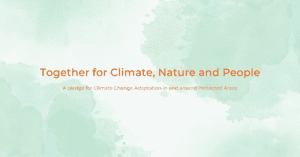 The EUROPARC “Pledge for Climate” is a valuable legacy of the work we undertook in the framework of the LIFE Natur’Adapt project. It is a call for action to ensure biodiversity and climate are taken in due consideration as parts of the same picture. The pledge originates from the work of our Task Force on Climate Change and takes into account inputs and recommendations that were received from Park managing authorities, through constructive dialogue with EU institutions, the CoE and other partners in the project. This call for engagement aims to value the overall results of the project and to reach a wide audience of Protected Areas across Europe.
The EUROPARC “Pledge for Climate” is a valuable legacy of the work we undertook in the framework of the LIFE Natur’Adapt project. It is a call for action to ensure biodiversity and climate are taken in due consideration as parts of the same picture. The pledge originates from the work of our Task Force on Climate Change and takes into account inputs and recommendations that were received from Park managing authorities, through constructive dialogue with EU institutions, the CoE and other partners in the project. This call for engagement aims to value the overall results of the project and to reach a wide audience of Protected Areas across Europe.
If you belong to any institutions, regional authority or Protected Area networks across Europe and you want to take further action against climate change, you can support us by endorsing the Pledge.
Read the pledgePlease send an email to Simone Prestes Dürrnagel at simone.prestes.duerrnagel@europarc.org including:
- Name and logo of the Institution or Organisation;
- Name and role of the Signing Person.
More information about the pledge can be found here.
Other resources
External websites
Below you will find links to external websites that provide information and resources, both in English or other languages, on Climate Change Adapdation:
- NaturAdapt project website – https://naturadapt.com/
- EUROPARC´s resources on Climate Change – https://www.europarc.org/nature/climate-change/
- Copernicus Climate Change Service – https://climate.copernicus.eu/
- Protected Areas and Climate Change resources on NaturAdapt project website (in French) – http://www.pearltrees.com/aires_protegees_et_changement_climatique
- Climate Adapt project – https://climate-adapt.eea.europa.eu/
Downloads
-
Article - Time to put nature at the heart of climate change adaptation
In this issue of the Protected Areas Insight 2021 "Parks in the Spotlight. Powered by People; Inspired by Nature" you can find, in page 12, a dedicated articles to Climate Change adaptation "Time to put nature at the heart of climate change adaptation" written by Olivier de Sadeleer, project manager of NaturAdapt.
-
Article - Helping nature adapt to climate change, or is it the other way around?
In this issue of the Protected Areas Insight 2020 "Our new future: How ready are we?" you can find, in page 24, a dedicated articles to Climate Change adaptation "Helping nature adapt to climate change, or is it the other way around?" written by Olivier de Sadeleer, project manager of NaturAdapt.
-
Discussion Paper - Protected Areas And The European Strategies For Climate Change Adaptation And Biodiversity
A discussion paper on “Protected Areas and the European Strategies for Climate Change Adaptation and Biodiversity” released by the The EUROPARC Task Force on Climate Change that aims to accelerate the transition towards a nature-inclusive and climate-resilient society. Through a couple of suggestions, it aims at kick starting a dialogue to bridge the gap between climate change adaptation and nature conservation communities.
Stay up to date with EUROPARC’s work and be the first to know when new resources come out! Fill out your details below to sign up for our newsletter, you can unsubscribe any time.
